#friedrich das musical
Text
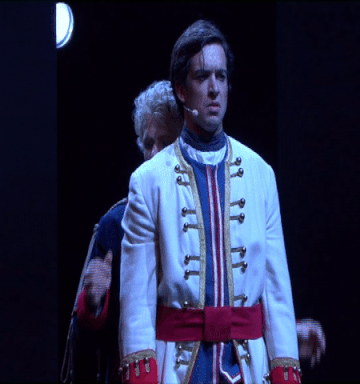
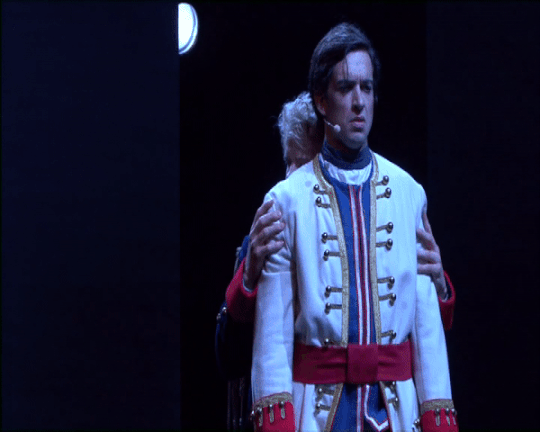

gay gay homosexual gay
do not repost / do not remove source
#fratte#friedrich das musical#friedrich mythos und tragödie#friedrich der große#hans hermann von katte#my gifs
5 notes
·
View notes
Text
Carl Friedrich Abel (1723-87) - Sonata for Viola da gamba and Harpsichord in e-minor, WKO 150, II. Allegro. Performed by Thomas Fritzsch, viola da gamba, and Shalev Ad-El, harpsichord, on period instruments.
#carl friedrich abel#classicism#rococo#classical music#viola da gamba#harpsichord#period performance#period instruments#viola da gamba sonata#viol sonata#sonata#chamber music#viol#bass viol#strings#keyboard
32 notes
·
View notes
Text

Thomas Gainsborough (1727-1788)
Karl Friedrich Abel (±1765)
oil on canvas, 126.7 x 101.3 cm
National Portrait Gallery, London
#thomas gainsborough#karl friedrich abel#national portrait gallery#painting#portrait#music#composer#viola da gamba
1 note
·
View note
Text
Fígaro vuelve a Sevilla
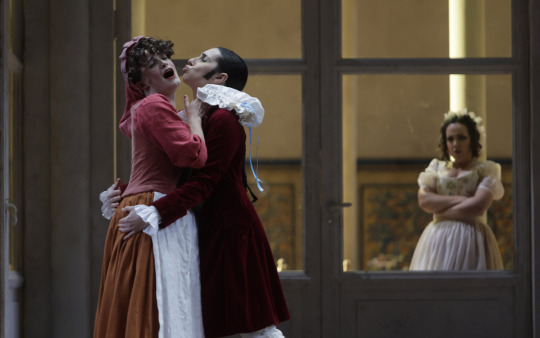
[Un momento del ensayo general de 'Las Bodas de Fígaro' de Mozart en el Maestranza / JUAN CARLOS MUÑOZ]
Desde esta misma tarde y hasta el próximo sábado, el Teatro de la Maestranza presenta 'Las bodas de Fígaro', ópera de Mozart y Da Ponte ambientada en Sevilla
No hay ninguna constancia de que Pierre-Augustin Caron de Beaumarchais (1732-1799) visitase Sevilla, pero es seguro que estuvo en España, moviéndose en los ambientes de la corte madrileña cerca de un año, entre la primavera de 1764 y la de 1765, y fue allí donde concibió los enredos de Fígaro, uno de los tres personajes que vinculan de forma incontestable la ópera con la ciudad (los otros dos son, por supuesto, Don Juan y Carmen).
Relojero de oficio, Beaumarchais fue él mismo todo un personaje de su tiempo, que ejerció a lo largo de su vida de profesor de música, horticultor, prestamista, diplomático, espía y traficante de armas, entre otros empleos menos prestigiosos y lucrativos, aunque fue su dedicación al teatro lo que acabó por preservar su nombre para la posteridad. Entre todas sus creaciones literarias es sin duda la trilogía concebida en torno a Fígaro, el barbero sevillano que ayuda a un joven conde a conquistar a su amada y se ve involucrado luego en tramas sentimentales de las más diversas, la que más hizo por su fama universal.
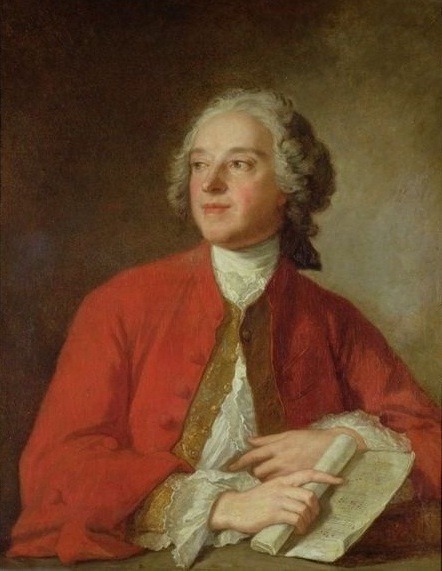
[Pierre-Augustin Caron de Beaumarchais (1732-1799) / D.S.]
El 23 de febrero de 1775 en la Comédie Française se presentó El barbero de Sevilla o La precaución inútil y, aunque la función del estreno no parece que fuera memorable, pronto la obra se impuso como un éxito extraordinario, lo que llevó a su autor a idear una continuación, Las bodas de Fígaro, que escribe en 1778 pero no sube a las tablas hasta 1784. Beaumarchais, liberal y agitador político, intercesor por la causa de la independencia de las colonias inglesas en América y luego revolucionario convencido en su propio país, dejó sutilmente esparcidas por su comedia rotundas críticas contra la sociedad del Antiguo Régimen y eso haría trabajar con denuedo durante años a la censura de todos los reinos europeos. Finalmente, ya en 1792, se estrenó La madre culpable, tercera parte de la trilogía, que su autor editaría con el título genérico de La novela de la familia Almaviva.
Pero, como ha ocurrido con tantas obras teatrales a lo largo de la historia, sin la música, estas piezas serían hoy un pálido recuerdo en libros de historia de la literatura y no la experiencia vívida que sigue emocionando año tras año a miles de personas por los teatros de medio mundo. En el último listado de obras vinculadas a Sevilla que recopila Andrés Moreno Mengíbar, coautor de varias monografías sobre el tema, figuran 43 óperas relacionadas con el personaje de Fígaro, si bien ahí se incluye alguna pieza inacabada, como la que dejó Leoncavallo, o por completo inédita, como la del madrileño Conrado del Campo.
En los casos más conocidos, estas óperas están compuestas sobre libretos que parten directamente de los originales de Beaumarchais, pero hay también muchas otras salidas de derivaciones argumentales creadas por otros autores. Fígaro dejó de pertenecer a su autor y eso es prueba definitiva de su triunfal universalización. Son las dos primeras obras de la trilogía las que más óperas inspiraron, pues para ver una sobre la tercera, en la que la comedia ha dejado paso a un drama moral, hay que esperar a 1966, cuando Darius Milhaud estrenó La mère coupable en Ginebra. Veinticinco años después, John Corigiliano triunfaría en el Metropolitan de Nueva York con otra ópera sacada del final de la trilogía, esta vez con el título de Los fantasmas de Versalles, una obra que no ha desaparecido ni mucho menos del repertorio.
Pero son evidentemente las dos primeras comedias las que más celebridad lírica han alcanzado, y ello casi desde el mismo momento de la presentación de la pieza teatral, pues ya en mayo de 1776 Friedrich Ludwig Benda había ofrecido en Leipzig un Barbero de Sevilla, cuando había pasado poco más de un año del estreno de Beaumarchais en París. En cualquier caso, el primer gran éxito operístico vinculado a la comedia original es sin duda el que obtuvo Giovanni Paisiello. Su Barbero de Sevilla se estrenó en San Petersburgo en 1782 y tuvo una resonancia extraordinaria en toda Europa, incluida Viena, donde Mozart aspiraba a relanzar su carrera de autor lírico, algo paralizada desde el estreno de El rapto en el serrallo, también en 1782. Con el tiempo, no sería tanto El barbero de Paisiello sino el que estrenó Gioacchino Rossini en Roma en 1816 el que acabó convertido en auténtico fetiche operístico mundial.

[Wolfgang Amadeus Mozart (1756-1791) / D.S.]
Fue Mozart quien en algún momento de 1785 decidió que Las bodas de Fígaro sería el sujeto de su nueva ópera, y Lorenzo Da Ponte le sirvió un libreto en el que los pasajes más políticamente transgresores habían sido limados, lo que permitió su exitoso estreno el 1 de mayo de 1786 en el Burgtheater vienés, un éxito que en cualquier caso quedó lejos del que había logrado la partitura de Paisiello en la misma plaza e incluso del que sólo unos meses después obtendría el valenciano Vicente Martín y Soler con otra comedia con libreto de Da Ponte, Una cosa rara.
Esta tarde el Teatro de la Maestranza presenta por tercera vez en su historia Las bodas de Fígaro, ahora con producción de Emilio Sagi para el Teatro Real. Las dos veces anteriores la ópera se ofreció en producción propia del teatro sevillano, debida a José Luis Castro (octubre de 1999, con la batuta musical de Alain Lombard; y su reposición en septiembre de 2011 comandada por Pedro Halffter). También fue Castro el responsable de una de las producciones más recordadas del Maestranza, la de El Barbero de Sevilla rossiniano que se estrenó en abril de 1997 y se repuso al año siguiente y en febrero de 2016. Unos años antes, en 1991, antes de la Expo, la Ópera Nacional Polaca había ofrecido ya el título de Rossini en la escena maestrante, y hay que irse dos años más atrás para documentar la presentación del Barbero de Paisiello en la ciudad: fue la itinerante Ópera de Cámara de Varsovia quien la ofreció dos días consecutivos de mayo de 1989 en el Teatro Lope de Vega. Así que desde el invierno de 2016, Fígaro, el factótum de la ciudad, no subía a las tablas de su principal escenario. Ha vuelto.
[Diario de Sevilla. 11-12-2022]
#pierre-augustin caron de beaumarchais#wolfgang amadeus mozart#lorenzo da ponte#gioacchino rossini#giovanni paisiello#john corigliano#darius milhaud#conrado del campo#ruggero leoncavallo#música#music#friedrich ludwig benda#vicente martín y soler
1 note
·
View note
Text
Strange incident in Berlin during the War of the 4th Coalition reported in Prussian newspapers
“After the unfortunate battle of Jena, Napoleon took up his headquarters in Charlottenburg Palace. He had barely gone to bed when the Prussian cavalry attack blared through the stillness of the night. Napoleon thought he had been ambushed and, startled, left his bed, rushed to the window and sounded the alarm. Everything rushes under the gun. The attack is blown again — and strangely enough — in the castle. An adjutant rushing from the Marble Hall finally solves the riddle. In that hall stands the Belloneon*, which His Majesty our King had had made by the acoustician Kaufmann in Dresden, a short time before that unfortunate battle, and which, on the King’s orders, had been provided with all the trumpet pieces of the Prussian cavalry. Napoleon’s curious companions had rummaged through the castle and had also come to the Belloneon in the Marble Hall. This strange instrument was examined and touched from all sides with genuine French curiosity. One happened to touch a small button that set the work in motion, and so it happened that a cavalry attack from 12 trumpets woke the Emperor from his sleep.”
———
*A Belloneon is a mechanical musical instrument consisting of many trumpets and kettle drums. The German Museum has a Belloneon with 24 trumpets and two drums (Inv.-Nr. 9654), built in 1805/06 by Friedrich and his father Johann Gottfried Kaufmann.
———
Original German:
»Nach der unglücklichen Schlacht bei Jena nahm Napoleon sein Hauptquartier im Schlosse von Charlottenburg. Er hatte sich kaum zu Bette begeben, als die preußische Cavallerie-Attaque durch die Stille der Nacht schmettert. Napoleon glaubt sich überfallen, fährt erschrocken von seinem Lager, stürzt an's Fenster und läßt Alarm schlagen. Alles eilt unters Gewehr. Die Attaque wird noch einmal geblasen - und sonderbar genug - im Schlosse. Ein aus dem Marmorsaale herbeieilender Adjutant löst endlich das Räthsel. In jenem Saale steht das Belloneon, welches Se. Maj. unser König von dem Akustiker Kaufmann in Dresden, kurze Zeit vor jener unglücklichen Schlacht, hatte verfertigen lassen, und welches auf Befehl des Königs mit allen Trompeterstücken der preußischen Cavallerie versehen worden war. Napoleon's neugierige Begleiter hatten das Schloß durchstöbert und waren auch zum Belloneon im Marmorsaale gekommen. Dieses merkwürdige Instrument wurde mit echt französischer Neugierde von allen Seiten untersucht und betastet. Man berührte zufällig ein kleines Knöpfchen, welches das Werk in Bewegung setzt, und so kam es, daß eine Cavallerie-Attaque von 12 Trompeten den Imperator aus dem Schlafe aufschmetterte.«
Source:
Wolf, Rebecca (2012). "Die Musikmaschinen von Kaufmann, Mälzel un Robertson: eine Quellenedition [The music machines of Kaufmann, Mälzel and Robertson: a source edition]" (pdf). Preprint (5). Deutsches Museum
#Friedrich Kaufmann#German Museum#Deutsches Museum#napoleonic era#napoleonic#Berlin#Prussia#war of the 4th coalition#19th century#1800s#napoleon bonaparte#Napoleon#Charlottenburg Palace#Schloss Charlottenburg#first french empire#french empire#prussian history#music#music history#history#france#french history#battle of Jena#Jena#Belloneon#trumpets#trumpet#German#german history#kaufmann
10 notes
·
View notes
Text
this is fun: in the german translation of right ho, jeeves (and all discussion of whether or not to translate wodehouse aside, thomas schlachters übersetzungen sind grenzgenial, theres a reason why theyre published in the suhrkamp verlag, and i genuinely wouldnt have thought it'd work unless you got harry rowohlt to translate them, but it does work and its brilliant, genuinely brilliant - at times a bit bundesdeutsch but it is what it is) - in the german translation of right ho, jeeves (and the one other german jeeves i have read so far as well, and with complete confidence that this will continue) literary references are sometimes translated produktionsorientiert/as they are - shakespeare usually stays shakespeare, theres one rhyme of the ancient mariner that remains rhyme of the ancient mariner, but other times they are translated rezeptionsorientiert and become quotes by german-language poets - in thank you jeeves, "It is a far, far better thing that you do than you have ever done, sir." becomes "Das Opfer,das die Liebe bringt, es ist das teuerste von allen; doch wer sein Eigenstes bezwingt, dem ist das schönste Los gefallen, Sir." (Goethe)
So now in the german translation of right ho, jeeves, we have, s. 89, "Das edle Tier, man weiß nicht wie, versinkt in tiefe Melancholie.", Heinrich Heine, Der weiße Elephant. Works very nicely! looking it up, in the original its "Melancholy had marked him for her own", Thomas Gray, Elegy written in a church yard. Now this is funny as fuck already because despite the rather similar content of these two quotes - someone is melancholy - the one chosen for the german translation refers to an elephant, and this is the same poem that also includes "Er dachte hin, er dachte her; Das Denken wird den Königen schwer.", and when applied to a pongo twistleton, it becomes somewhat cynical, and pongo becomes somewhat pathetic, and jeeves is once again being rude as fuck.
Now, later on, in right ho jeeves, there is "Fahr wohl, o goldne Sonne, Sir, du gehst zu deiner Ruh', und voll von deiner Wonne gehn mir die Augen zu", Text by Friedrich Rückert, set to music by Beethoven. Now. NOW. this wouldnt even be that funny if i had read it in english first, but i didnt, and i am far too amused by this. the original english is "Now fades the glimmering landscape on the sight, sir, and all the air a solemn stillness holds.", once again, thomas gray, elegy written in a church yard. so while in german jeeves quotes a wide variety of stuff, the original makes it seem like he just recently read one (1) poem and now keeps bringing it up, and i am so amused by this
9 notes
·
View notes
Text
Interview with a Ghost, or: Royal Ghost Hunters
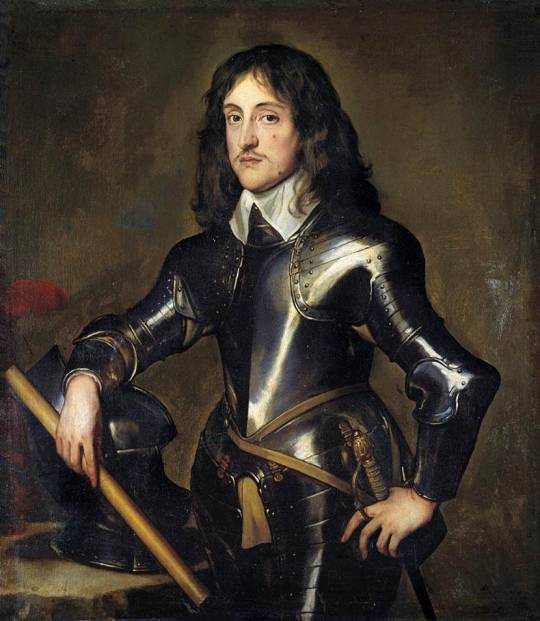
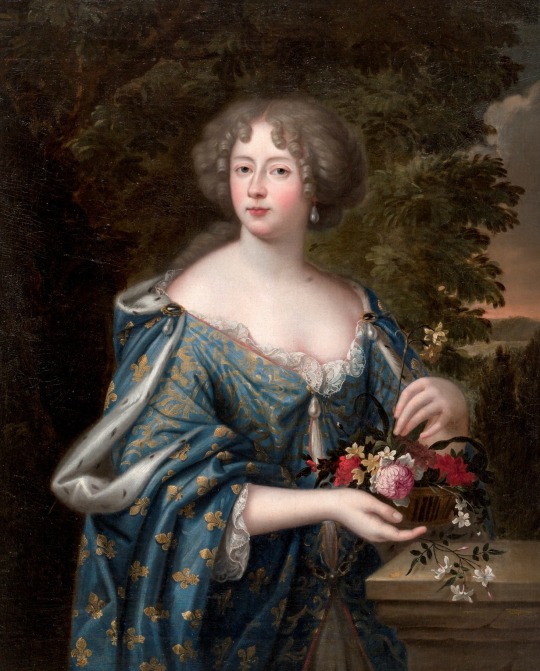

Left to right: ghost hunters Karl Ludwig I. Elector Palatine (1617–1680), his daughter Liselotte von der Pfalz, Duchess of Orleáns (1652–1722), and Friedrich Wilhelm I., King in Prussia (1688–1740).
Since it’s Halloween, I thought I should make a themed post! And what better topic to choose than ghosts? But more often than not, these restless souls wandering between the worlds, preferably at night, are of an entirely earthly origin— especially when bedsheets are involved.
Haunted more by a family history of trouble and turmoil than actual ghosts, let’s look at three Stuart descendants and their brush with the allegedly supernatural:
Karl Ludwig, Elector Palatine and the Ghost of Chain Alley
This first story of a successful ghost hunt concerns Karl Ludwig, Elector Palatine, and was passed from Liselotte von der Pfalz to her much younger half-sister Luise on 22 February 1721.
Zu Heidelberg, ehe Ihr geboren, wurd ein groß Geschrei von einem Gespenst, so alle Nacht mit feurigen Augen und großem Geplärr durch die Kettengaß ging. Ihro Gnaden, der Kurfürst, unser Herr Vater, ließ dem Gespenst aufpassen und fangen; da ertappte man drei oder vier Studenten, so Franzosen waren. — Einer, so Beauregard hieß und des Generals Balthasar Schwager war, der war das Kalb, und die andern, ich glaube Monsieur Dangeaus Bruder, Coursillon, so jetzt Abbé ist, halfen zu der Musik. Wenn man die Gespenster genau examiniert, kommt als so was heraus.
From: Künzel, C. [Ed.], Die Briefe der Liselotte. Liselotte von der Pfalz, Herzogin von Orleans, München 1923, p. 442.
Translation:
[…] At Heidelberg, ere you were born, there was great upheaval on account of a ghost, which would go through the Kettengasse [literal translation: Chain Alley] each night with fiery eyes and a great clamour. His Grace the Elector our father had the ghost waylaid and captured; they caught four students, who were Frenchmen. – One of them by the name of Beauregard was the brother-in-law of General Balthasar, was the calf and the others, I believe the brother of Monsieur Dangeau, Coursillon, who is an abbé [abbot] now [among them], helped make the music. If only you examine ghosts closely, that’s what you’ll uncover.

The location of the Kettengasse in Heidelberg, via Google Maps. Conspicuously close to university buildings, it probably was not hard to guess that the ghost was a student hoax.
The Ghost of the Poisoned Princess: Liselotte Investigates

Henrietta Anne (1644–1670), first wife of Philippe, Duke of Orléans in a posthumous portrait by Peter Lely, and rather fittingly dressed in a white gown.
As can be seen from the story relayed to her half-sister, her father's no-nonsensical attitude set the tone for Liselotte’s own approach to ghostly apparitions— some stories, such as the ghost wandering the conspicuously aptly named Kettengasse, just seem too good to be true.
While not directly involved in the ghost hunt itself, Liselotte, a no-nonsensical person who did not believe in organised religion at large and superstition in particular, remained unphased when a ghostly apparition quickly identified as the wronged and restless soul of her husband’s first wife Henrietta Anne of England started to appear on occasion in a specific spot in the gardens of her residence, Saint Cloud palace. Liselotte, while occasionally chiming in on the rumours that Henrietta Anne may have been poisoned by the Chevalier de Lorraine, her husband’s favourite and her personal arch-nemesis, would have nothing of it and even interviewed the ghost in person:
Es gieng vor vielen Jahren ein Geschrey zu St. Cloud, daß feue Madame Geist im Garten bei einem Brunnen gienge, wo sie sich in der größten Hitze aufgehalten, den der Ort ist sehr kühl. Als des Marêchal de Clerembeaut Lakey Abends wie die Sonne untergegangen war, an dem Brunnen gieng Wasser zu schöpfen, sahe er etwas weisses an dem Brunnen sitzen ohne Figur, das stehet gegen ihm auf, und wird noch einmal so groß; der arme Lakey erschrack und lief weg, wie er aber weiter kam, sagte er: er hätte Madame gesehen, wurde tod krank und starb, der aber damals Capitaine du Chateau war, und wohl denken konnte, daß man dahinter stecken müste, gieng etliche Tage nachher auch zu dem Brunnen, und wie er das Gespenst gehen sahe, drohete er dem Gespenst 100 Prügel zu geben, wofern es nicht sagte, wer es wäre. Das Gespenst sagte: ah! Monsieur de Lastera, ne me faites point de mal, je suis la pauvre Philippinette. Diese war ein alt Weib aus dem Dorfe von 77 Jahren, die keinen Zahn mehr im Maule hatte und böse Augen, einen feuerroten Bord darum, ein groß Maul, eine große Nase; Summa se war abscheulich. Man wollte sie in ein Gefängnis führen, ich bat aber für sie. Sie kam mir zu danken; ich sagte: quelle rage Vous tient de faire l’esprit au lieu de Vous aller coucher? Sie fieng an zu lachen und sagte: je ne puis avoir regret à ce que j’ai fait; à mon âge on dort peu. Il faut bien avoir quelque petite chose pour reveiller l’esprit. Tout ce que j’ai fait dans ma jeunesse ne m’a tant rejouï, que de faire l’ésprit. J’étois bien sure, que ceux qui n’auroient pas peur de mon drap bla[n]c, auroient peur de mon visage. Ceux qui avoient peur, faisoient tant de grimaces, que j’en mourrois de rire. Ce Plaisir nocturne me payoit de la peine d’avoir porté la hotte toute la journée. Den 17ten Novembr. 1716.
From: Veltenheim, August F. von [Ed.], Anekdoten vom Französischen Hofe vorzüglich aus den Zeiten Ludewigs des XIV. und des Duc Regent: aus Briefen der Madame d'Orleans Charlotte Elisabeth, Herzog Philipp I. von Orleans Witwe Welchen noch ein Versuch über die Masque de Fer beigefügt ist, Strassbourg 1789, p. 291 f.
Translation:
Many years ago at St. Cloud, there was a rumour that the ghost of the late Madame [Henrietta Maria of England, first wife of Philippe d’Orléans] was pacing beside a well where she had dwelt in the greatest heat, because this place is exceedingly cool. When a lackey of the Marshal de Clerembeaut went to the well one evening to draw water, he saw something white and shapeless sit beside the well, which, facing him, rose and doubled in size; the poor lackey was startled and ran away, and as he got away, said that he had seen Madame, [then] fell fatally ill and died. But the person who was Capitaine du chateau [steward of the palace] at the time, having decided that one should ascertain what was behind all this, afterwards went to the well for several days as well, and upon seeing the ghost, threatened them with 100 lashes if they would not tell him who they were.
The ghost said: “Ah! Monsieur de Lastera, do me no harm, I am the poor Philippinette.” She was an old woman from the village who was 77 years old and had not a tooth left in her mouth and bloodshot eyes with red circles around them with a big mouth and a big nose and was therefore, all things considered, hideous.
They wanted to take her to prison, but I interceded on her behalf. She came to thank me; I said: “What came over you to try and be funny instead of going to sleep?”
She started to laugh and said: “I cannot regret what I have done; at my age, one sleeps little. One has to have a little something to raise one’s spirits. Everything that I have done in my youth has not delighted me as much as playing the spirit. I was quite certain that those who would not be afraid of my white sheet would be afraid of my face. Those who were afraid made such grimaces that I was dying of laughter. This nocturnal pleasure repaid me for the strain of having carried the hood all day.”
17 November 1716.
It's quite telling that she's punning on the phrase faire de l'ésprit, i.e. trying to be witty or funny (with ésprit also meaning spirit). Clearly, she was more amused than annoyed by Philippinette's prank, which stands in stark contrast to the next ghost hunter:
Friedrich Wilhelm I. in Prussia vs. 3 (!) White Ladies
Skipping a few generations down the family tree to the grandson of Liselotte’s favourite aunt Sophie von Hannover, for Friedrich Wilhelm, father of Frederick the Great, King in Prussia, the ghostly appearance of a woman in white announcing his father’s death in 1713 was less accidental than expected. Since generations, it was rumoured that the apparition of the ghostly figure known as the White Lady announced the death of a member of the Hohenzollern family. To name but some of the most prominent recent deaths in the family, the White Lady was rumoured to have been spotted just before the death of his grandmother Louise Henriette of Orange in 1667, grandfather Elector Friedrich Wilhelm in 1688 and their infant son Wilhelm Heinrich in 1649.
The ghost known as the White Lady was long rumoured to have been the unhappy ghost of a woman called Kunigunde von Orlamünde, a 14th century widowed noblewoman who was said to have fallen in love with a much younger man and member of the Hohenzollern family, Albrecht der Schöne [Albrecht the Beautiful]. Albrecht, or so the story goes, wanted to marry her, but faced fierce opposition from his parents, prompting him to say that four eyes stood in the way of their happiness. Kunigunde, misinterpreting her lover’s words, proceeded to murder her two children from her first marriage, thinking they were the two pairs of eyes Albrecht had alluded to. Having murdered her children, the penitent, lovestruck Kunigunde supposedly attached herself permanently to Albrecht’s family after her death. Research done in the 19th century however reveals that Kunigunde was childless, and that her only relationship with Albrecht was one of business, having bought land from him on which she built Himmelthron abbey, as whose abbess she died in 1382.
Another possible inspiration for the White Lady, particularly when seen in the Stadtschloss in Berlin, was Anna von Sydow, mistress of Elector Joachim II of Brandenburg (1505–1571), who died unhappily after having been incarcerated by her lover’s son and successor, to whom she is said to have appeared in her ghostly form to announce his approaching passing.

Epitaph of Kunigunde von Orlamünde as abbess of Himmelthron and a portrait said to depict Anna von Sydow, two women whose names are tethered to the myth of the White Lady of the Hohenzollern family.
Whether there is one definitive inspiration for the White Lady or not, the apparition visiting Friedrich I. on his deathbed was however of an altogether worldlier nature; this White Lady’s name was Sophie Luise zu Mecklenburg-Schwerin— and Friedrich’s third wife.

Friedrich I., King in Prussia.
For some time prior to Friedrich’s death, Sophie Luise’s mental health had deteriorated to such a degree that the Queen was considered insane by contemporaries. What had initially begun with a journey to finding personal religious fulfilment in Pietism and fights with Friedrich over which (Protestant, naturally) denomination was the ‘right’ one, developed into depression and at last, periods of aberration and complete disconnect from the world around her, prompting Friedrich to seek at least spatial separation from her.
One night in the months leading up to his death, Friedrich awoke in his chamber in the Stadtschloss to find a woman with loose hair dressed in nothing but her white, bloodied nightclothes standing over him, and addressing him with reproaches. The King, naturally frightened and thinking the White Lady herself had come to take him away screamed, alerting his household. The attendants thus alarmed and rushing to the scene quickly identified the intruder as none other but the Queen, who had escaped from her quarters.
Wholly unaware of what she had done when asked about the incident later, Sophie Luise had broken a glass door on the way to her husband’s quarters and cut herself on the shards, causing the blood stains on her clothing.

Sophie Luise von Mecklenburg-Schwerin, Queen in Prussia (1685–1735).
No longer tenable at the Prussian court after this episode, Sophie Luise, presumably by the authority of the Crown Prince Friedrich Wilhelm, was sent back to Mecklenburg to live with her mother mere weeks before her husband died; but Sophie Luise’s departure did not mean that Friedrich Wilhelm had put an end to the White Lady for good.
Reports are somewhat murky, but there appear to have been several other, less tragically accidental and decidedly more mean-spirited White Ladies in 1713 Berlin following the death of Friedrich I., which prompted the newly-minted Friedrich Wilhelm I. to act and, hopefully once and for all, banish the White Lady to the realm of legends.
Two men were put into the stocks and (accounts vary here) possibly whipped, one of them a young kitchen hand and the other a soldier. Either they were two genuine pranksters caught red-handed (or rather, white-gowned) in the streets of Berlin, or Friedrich Wilhelm had the men selected at random to make an example of two people he considered expendable to deter any would-be White Ladies.
Whatever the new King’s motivations, there are no reports of the ‘real’ White Lady having visited Friedrich Wilhelm at his own death in 1740; so it worked— at least for a while. By the end of the century, the White Lady was back with the Hohenzollern family and according to legend, even took it upon herself to chill the bones of Napoleon when he visited Bayreuth Palace, associated with the Hohenzollerns, in 1812.
Reports of the White Lady continue into the 20th century; she was last sighted on 31 January 1945 in Berlin, three days before the Stadtschloss was reduced to rubble under allied bombardments.
Perhaps, with the rightfully controversial reconstruction of the Stadtschloss (not to speak of the museum housed within, but I digress) over the last few years, she will return, her old haunting-grounds having been restored?
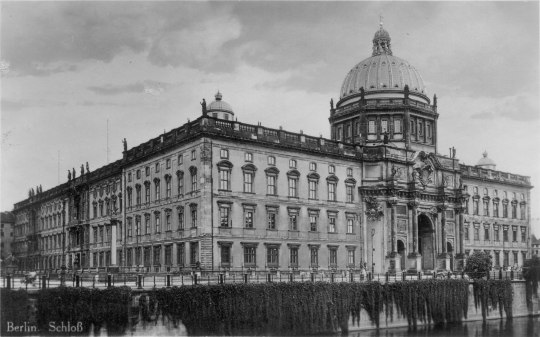
Photo of the north-eastern front of the Stadtschloss in the 1920s.

Photo of the north-eastern front of the Stadtschloss of September 2022, by Frank Schulenburg.
At present, it does not look like it. When Prinz Ferfried von Hohenzollern died about a month ago, there were no reports of the White Lady having made an appearance. But who knows? Perhaps on a dark autumnal night, as the street lanterns cast a sparse glimmer over the river Spree, and not a light shines from the windows of the new Stadtschloss, you might be (un-)lucky enough to spy her...?
...But always remember that if you do, you're most likely to have encountered a modern-day Philippinette.
Happy Halloween, everyone!
#halloween#spooky season#history#17th century#18th century#ghost stories#ghosts#weiße frau#white lady#karl ludwig von der pfalz#liselotte#liselotte von der pfalz#friedrich wilhelm i#friedrich i#sophie luise von mecklenburg-schwerin#kunigunde von orlamünde#anna von sydow#saint cloud#berlin#stadtschloss#myths and legends#german history#french history#my history posts
71 notes
·
View notes
Text
La Fayette and the "Emkendorfer Kreis"
The Emkendorfer Kreis (the Emkendorf Circle) was a Danish-German intellectual society that focused mainly on literature, music and theological discussions. It was formed around Friederike Juliane Gräfin von Reventlow (Countess of Reventlow, pictured below.) The circle counted such luminaires like Matthias Claudius, Friedrich Gottlieb Klopstock, Matthias Claudius, Heinrich Christian Boie, Johann Heinrich Voß and Friedrich Heinrich Jacobi as its members. It was sometimes also referred to as the Weimar des Nordes (the Weimar of the North.)

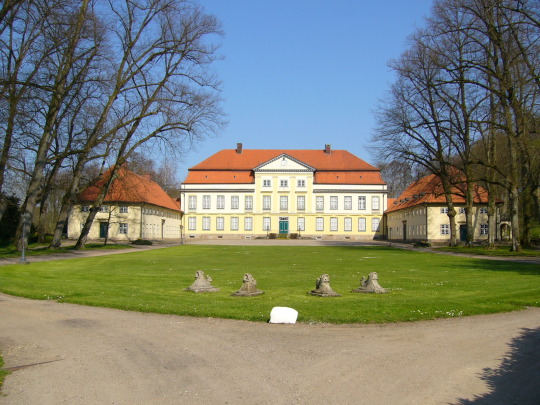
The name of the group derived from the manor “Emkendorf” (pictured above) that was and to this day still is owned by the von Reventlow family. The von Reventlow family is a noble family with great influence in both Denmark and Germany. Several members of the family were diplomats and held high offices while also having significant influence on the academic and artistic landscape of their day. Although the influence of the family has diminished over the last two centuries, the family still has considerable holdings in northern Germany, is well connected and engaged in local politics. Gut Emkendorf in particular is often the venue for cultural or musical presentations, special markets were craftspeople can sell their goods as well as guided tours that touch on the regional as well as on the family history.
Gut Wittmold and Gut Lehmkuhlen, the two mansions where La Fayette and his family stayed during their exile in Danish-Holstein, are close by and the La Fayette’s as well as friends and other family members were guests at Gut Emkendorf and occasionally present when the Emkendorfer Kreis met. The relationship between the von Reventlow's and the La Fayette’s in particular was rather cold and reserved. I wrote in this post here about Friederike Juliane’s opinion on Adrienne and her sister Pauline, but there was far more to the matter.
Überhaupt hat der Aufenthalt all dieser Fremdlinge in Emkendorf dazu beigetragen, sich über die Ereignisse der Französischen Revolution genauer zu unterrichten, keineswegs aber das Urteil darüber zu mildern. Hier, wo ohnehin die alte ständische Gliederung als einzig wahre Staatsform betrachtet und deutscher Geisteskultur der Vorrang vor jeder anderen, besonders der französischen, gegeben wurde, konnten jene liberalen französischen Royalisten bei allem Mitgefühl für ihr Schicksal doch nicht auf volle Übereinstimmung mit ihren Zielen rechnen. Ein Mann wie Lafayette, der Holstein ebenfalls zu seinem Asyl für kurze Zeit erkor, ist in Emkendorf als unmittelbarer Mitschuldiger an den blutigen Anfängen der Revolution mit eisiger Kälte empfangen und wieder entlassen worden (…)
Otto Brandt, Geistesleben und Politik in Schleswig-Holstein um die Wende des 18. Jahrhunderts, Outlook Verlag GmbH, Frankfurt, 2022, original reprint from 1925, pp. 150-151.
My translation:
In general, the stay of all these foreigners in Emkendorf helped the people in Emkendorf to learn more about the events of the French Revolution, but in no way did it softened their judgment. Here, where the old system of goverment was regarded as the only true form of government and German intellectual culture was given priority over any other, especially French intellectual culture, those liberal French royalists, with all the sympathy for their fate, could not count on full agreement with their ideals. A man like Lafayette, who also chose Holstein as his asylum for a short time, was received in Emkendorf, as a direct accomplice in the bloody beginnings of the revolution, with icy coldness (...)
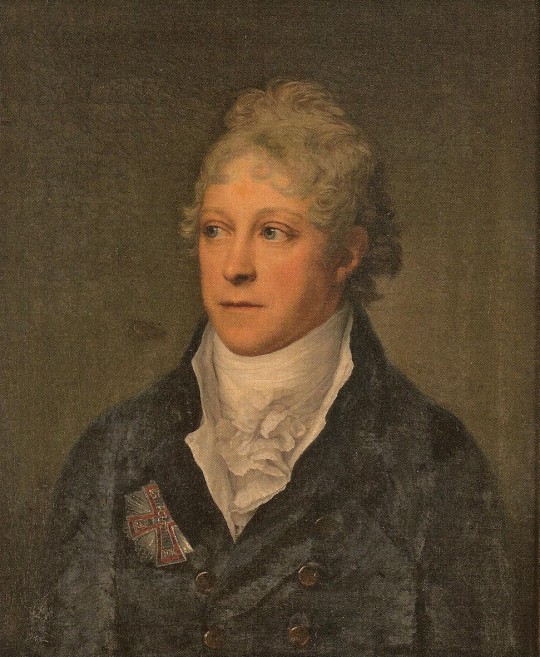

The next passage partly quotes a letter from Friedrich “Fritz“ Karl Graf von Reventlow (left, Friederike Juliane’s husband) to his brother Cay Friedrich Graf von Reventlow (right) from June 1, 1798
Übrigens war man in Emkendorf überzeugt, dass Lafayette bei „seinem stillen und eingezogenen Wesen“ sich nicht „als Werkzeug brauchen lasse“ und nicht „kleine niedrige Künste und Ränke“ anwende um „den Geist der Revolution auch im Norden zu erregen“.
Otto Brandt, Geistesleben und Politik in Schleswig-Holstein um die Wende des 18. Jahrhunderts, Outlook Verlag GmbH, Frankfurt, 2022, original reprint from 1925, pp. 151.
My translation:
People in Emkendorf were convinced that Lafayette, with “his quiet and withdrawn nature”, would not let anyone “use him as a tool” and would not use “small low arts and intrigues” to “excite the spirit of the revolution in the north as well”.
While I myself always like to point out that La Fayette was far more than the bubbly teenager, he is often made out to be, I find it nevertheless quite remarkable that La Fayette is described here as “quite and withdrawn”. It shows once more that the last years had been a living nightmare for him and his family.
#marquis de lafayette#la fayette#la fayette in exile#wittmoldt#lehmkuhlen#emkendorf#french history#history#french revolution#letter#1798#german history#danish history#friederike juliane gräfin von reventlow#von reventlow#cay friedrich graf von reventlow#friedrich “fritz” karl graf von reventlow#adrienne de lafayette#adrienne de noailles#pauline de noailles#matthias claudius#Matthias Claudius#friedrich gottlieb klopstock#heinrich christian boie#johann heinrich voß#friedrich heinrich jacobi#emkendorfer kreis
26 notes
·
View notes
Text
Gustav's beginnings!
Hello everyone! First of all, thank you for following this blog! There is so much to write about that I don’t even know know where to start, so I guess we will be starting from the beginning :-)))
We all know that Gustav Friedrich Fröhlich was born in Hanover on March 21, 1902 - but did you know that he was an illegitimate child and did not grow up with his birth parents?
Back in those days, things were very hard for children born out of wedlock. There was practically no way for them to grow up with their biological parents: for the mother, this would result in a terrible scandal and a perpetual staining of her social standing and reputation, and that is why most women chose to travel to some other place and give birth to their children in secret before going back home and acting as if nothing had happened - so that nobody would know that they had had a child.
In Gustav’s case, his father would later become a pretty important person, a local engineer who would also be director and technical manager of a factory (the Halleschen Maschinenfabrik): his name was Karl-Friedrich König (1876-1952), though some online sources state his first name as being Gustav instead, which is of course interesting.
Not much is known about Gustav‘s mother outside of the information Gustav himself provided in his autobiography ‘Waren das Zeiten’, published in the 1980s, but she seems to have been the daughter of a local worker, who was actually having Gustav’s father (who was a student by then) as a lodger at his house when the two fell in love. Her name was Hedwig Therese Sophie René Fröhlich, and of course Gustav inherited her surname.
In any case, when Gustav was born in such a scandalous way, his father didn’t want to take any responsibility, and his mother, feeling rejected and outcast, had a sort of breakdown, which led her to give up the child on the spot and to only come back for him years later. In the meanwhile Gustav spent all his formative years with his grandparents and foster parents, who were extremely fond of music and helped him develop an appreciation for it. And he left home very early to start a career as a journalist- his first professional venture before setting his heart on acting.
One interesting detail: Gustav knew who his biological parents were, and spent quite a bit of time with his mother during his younger years - as an adult and famous actor, he even developed a close friendship with one of his half-brothers (more about this in the future!). For Karl-Friedrich König would have other children just a few years after Gustav’s birth, among whom renowned philosopher and sociologist René König (1906-1992).
Here is the cover of Gustav’s own book (for both the hardcover and the paperback editions), where he tells his life story - highly recommended if you can read German!

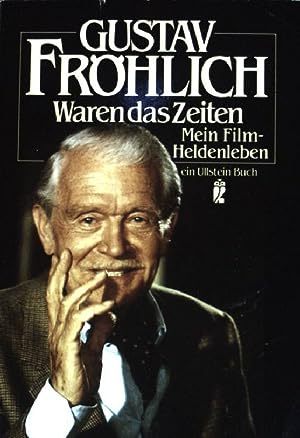
#gustav frohlich#silent cinema#german cinema#weimar#freder fredersen#metropolis#metropolis 1927#fritz lang#german expressionism
7 notes
·
View notes
Text
Character ask: Friedrich Bhaer (Little Women)
Tagged by anonymous
Favorite thing about them: He's a likable character all around. Kind, warm, sentimental, good with children, highly intelligent, firm in his moral values, funny in his absentmindedness, and of course loving. He's a good friend to Jo before they fall in love and an ideal match for her as a husband. I couldn't care less about the fact that he's not conventionally handsome or "romantic": neither is Jo. He might not be the dream man whom most girl readers who use Jo as a self-insert would want for themselves, but he's just right for her.
Least favorite thing about them: While I don't find fault with him for criticizing Jo's sensation stories the way other people do, I'll admit that his inner thoughts about the situation are a little condescending, as if Jo were a child in need of guidance. And I especially don't care for how satisfied he is when she gives up her writing altogether rather than write any more sensation stories. Yes, she's taken his moral advice to heart very nicely, but should he really be so happy to see her abandon her dream career altogether? If I could rewrite it, I'd change the order of events to have him give her the Shakespeare volume after her career stalls, to make it clear that he doesn't want her to give up her literary ambitions.
Three things I have in common with them:
*I love books.
*I like to play with children.
*I'm heavyset.
Three things I don't have in common with them:
*I'm not a professor.
*I don't have any nephews.
*I'm not German.
Favorite line:
"Heart's dearest, why do you cry?"
And when Jo replies "Because you are going away," his love confession and proposal:
“Ach, mein Gott, that is so good! Jo, I haf nothing but much love to gif you. I came to see if you could care for it, and I waited to be sure that I was something more than a friend. Am I? Can you make a little place in your heart for old Fritz?”
brOTP: All his friends and family members.
OTP: Jo.
nOTP: His sons, his nephews, or little Tina in New York.
Random headcanon: It was his idea, not Jo's, to name their son "Theodore" after Laurie, because Laurie was a close friend to them both by the time young Teddy was born. Not that there's anything wrong with the idea that Jo picked the name, but I don't like seeing people use it for a baseless argument that she and Laurie really do love each other more than they love their spouses.
Unpopular opinion: I don't think it's unforgivable of him to criticize Jo's sensation stories. In the first place, unlike in the adaptations, he never criticizes Jo's actual stories: he only criticizes the genre. But more importantly, what his haters seem to forget is that the sensation stories aren't Jo's passion. She writes them purely for money and is always a little ashamed of them. They're her equivalent of Amy's almost marrying Fred Vaughn for his wealth. Now, we could argue that a 19th century man had no right to judge how a woman earned her living when she had so few choices, and I'll admit I don't fully like his attitude about it (see "Least favorite thing..." above). But whenever I see the fandom chorus of "How can she marry a man who disliked her writing?" I think it's nonsense. He never criticizes the projects she truly cares about and writes from her heart. What he does is gently dissuade her from selling out her real creative genius and her values for money.
Song I associate with them:
Goethe's "Kennst du das Land." Here's Mark Adamo's setting of it from his 1998 Little Women opera.
youtube
"Small Umbrella in the Rain," his love duet with Jo in the final scene of the 2005 musical. (It's not the most accurate portrayal of their relationship... they don't really always argue and "disagree on everything" in the book... but it's still a sweet and pretty duet.)
youtube
Favorite pictures of them:
This illustration by Jessie Wilcox Smith.

This illustration of the same scene by Norman Rockwell (although it's a better picture of Jo than of Friedrich).
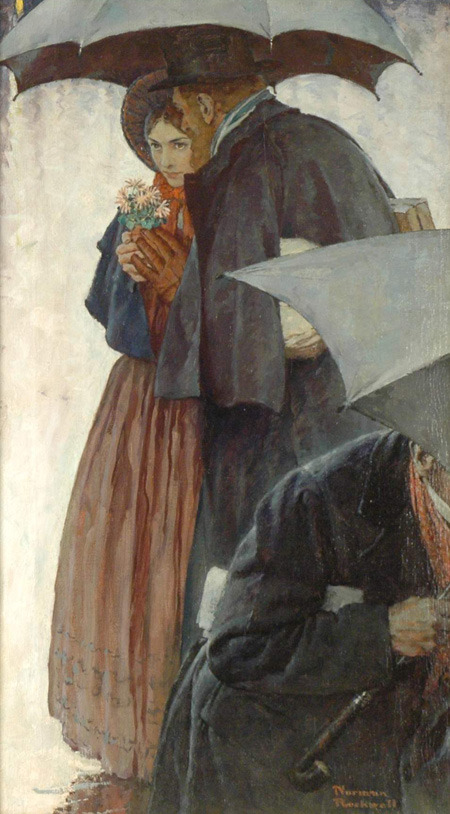
Paul Lukas in the 1933 film.

Rossano Brazzi in the 1949 film.
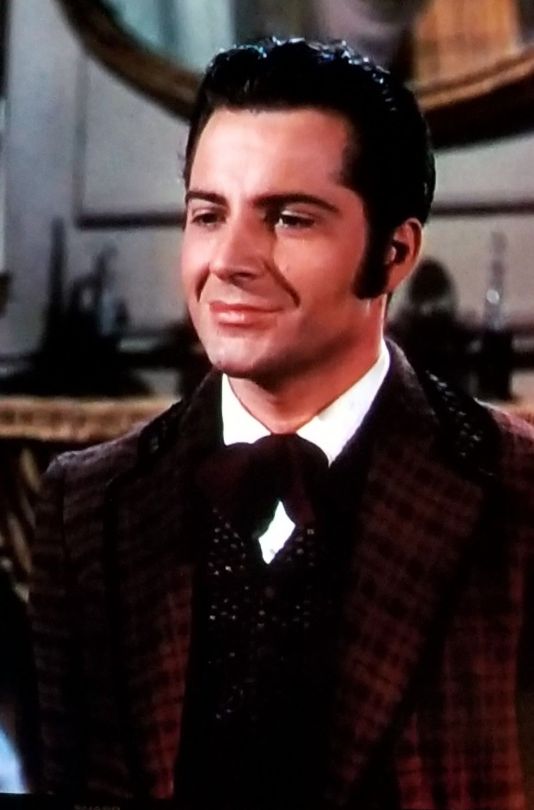
Gabriel Byrne in the 1994 film.

Mark Stanley in the 2017 miniseries.

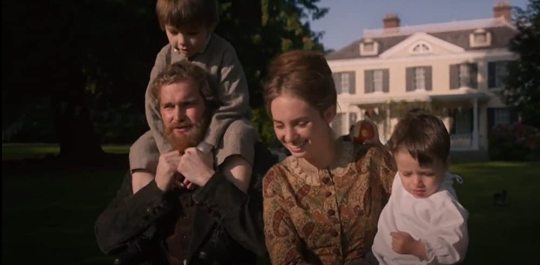
Louis Garrel in the 2019 film.
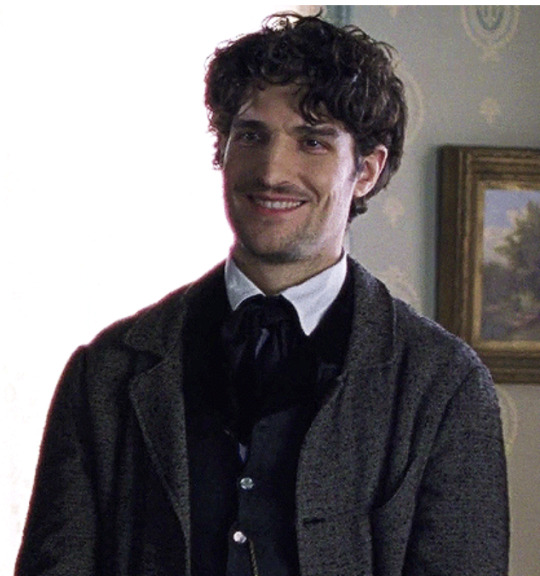
@littlewomenpodcast, @joandfriedrich, @thatscarletflycatcher
34 notes
·
View notes
Note
8, 9, 11, 20?
8- When did you hear of them for the first time and what was your impression?
I'm sure I heard of him before this since at the very least he's mentioned in Les Mis a bunch, but the first I remember hearing of him was November of '22 when I read Candide and became absolutely insane over it (they should make more depressed 16yos read Candide). I honestly don't remember my first impression of Voltaire himself; I think I just decided that I loved whoever wrote Candide.
9- What is your favorite depiction of them?
Maybe a basic answer, but I have to go with the Largillière portrait from when V was around 30, it's just pretty lol

And here's a drawing from a 19th-century book of V getting the portrait painted while Susanne de Livry (the source of the "amant à la neige" quote and whom the portrait was for) is standing next to him/fixing his wig:
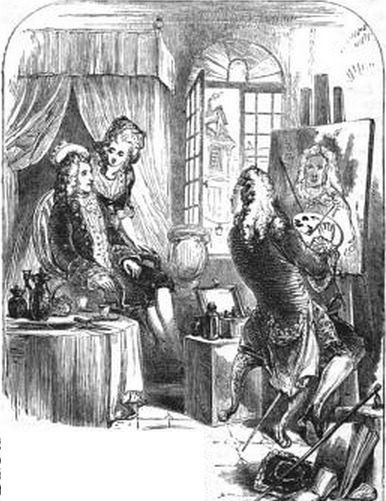
11- What is your favorite portrayal of them in fiction?
The only fictional portrayals I've consumed in full are A Visit from Voltaire by Dinah Lee Küng and Friedrich das Musical. The musical I couldn't understand seeing as it's in German, and AVFV is.. bad. really bad. It's the kind of thing you typically either a) keep on your anonymous Wattpad account, or b) burn. It's basically Küng's memoir about moving to Switzerland with her family, except the ghost of Voltaire is just. hanging out with her and giving her bad legal advice and stealing her computer to rewrite letters to his niece. So I guess my answer to this question is I don't really have one.
20- What is your favorite posession that relates to your favourite historical figure?
I have two for this one lol. First, a 1775 copy of Histoire de la Russie sous Pierre le Grand (part of the 1775 Œuvres Complètes that was published in Geneva) , which is just beautiful. I love the marble endpages and the border around the text. I also love how thick the paper is, not only because it's probably how it's held up so long, but also it's just such a nicer texture. #bringback18thCstylebookmaking2k24


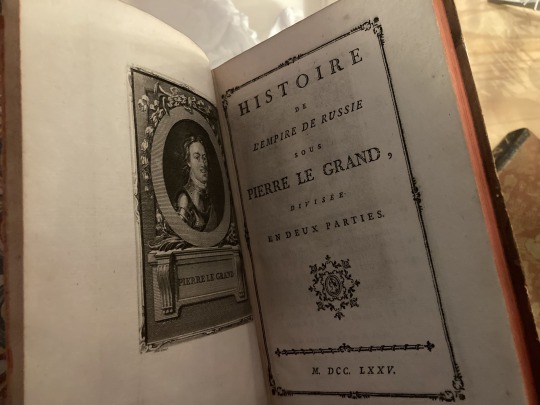

Second is this illustrated edition of Zadig:




Thanks for the ask!! (and sorry this was so long 😬)
#asks#voltaire#honestly a visit from voltaire is worth reading#it's like 3hrs max and it's fun to laugh at#also there's a ton of random voltaire trivia so it's like little easter eggs lol
5 notes
·
View notes
Text
Paintings I like
paintings are cool!!! i wish i could paint something!!! but i'm a terrible writer and even worse artist, so i'm sure it wouldn't work very well.
anyway, here are some paintings i love that i think you should see
When the Heart is Young, by John William Godward

I'm not an art critic or anything. I can't really offer you an explanation about colour composition, brush strokes and so on. But damn, this lady looks so pretty! Look at the details! I wish I could draw clothing folds like this. Fuck that, I wish I were there myself. Where this place at?
Six Dragons, by Chen Rong

This painting is older than most modern nations. Can you believe it? It was created during the 13th century, a couple of years before the Mongol conquest of the Song Dynasty. Chinese dragons are so cool. I wish fantasy authors did more stories with them.
Click here to see the full painting, because the whole thing couldn't fit here.
Penitent Magdalene, by Antonio Ciseri
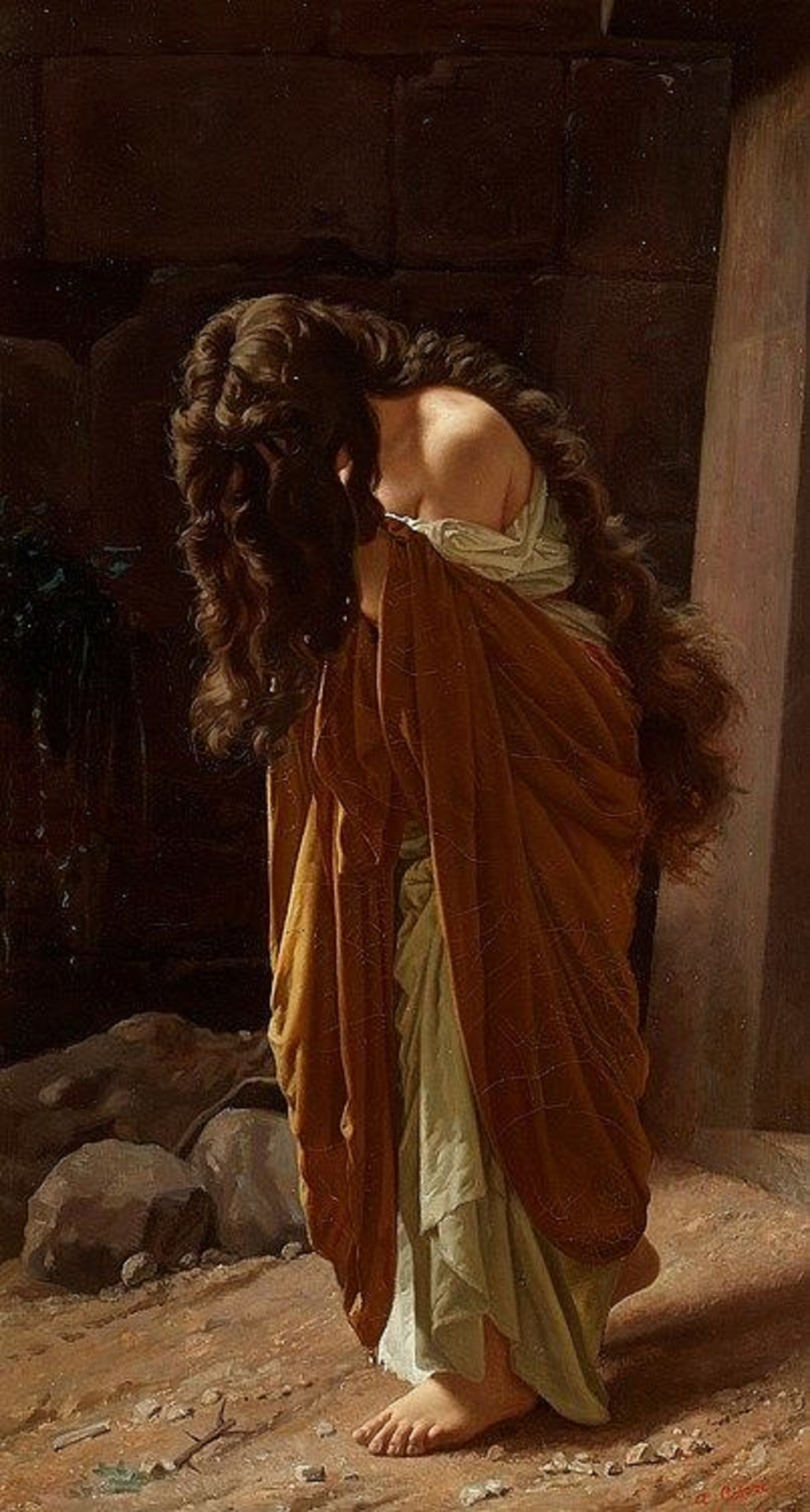
I don't know much about Bible lore, but I love this lady's hair. Wish I had hair like that.
Fazenda em Teresópolis, by Nicolau Facchinetti

This is where I post from.
Bacchante, by Willliam-Adolphe Bouguereau

This lady looks so chill. Like someone you could smoke a blunt with. I wish I could be her friend.
Girl with Cat, by Ivan Kramskoy

That's the painter's daughter, if I remember correctly. Such a mood.
Self-portrait, by Ivan Kramskoy

Kramskoy was such a handsome man.
Fim de Romance, by Antônio Diogo da Silva

I like to think this guy just broke up with his lover and his horse is trying to comfort him. We need more sad cowboys.
Wanderer above the Sea of Fog, by Caspar David Friedrich

This is how I look when I listen to sad music on a rainy day.
Blue, by Huaishen J

This one will forever be my Whatsapp pfp. I love it so much.
That's all for today. Reblog with your favourite paintings!!!! Or don't.
#fyp#fypツ#explorepage#explore#tumblr fyp#female artists#artists on tumblr#artblr#art on tumblr#painting#paintings#oil painting#oil on canvas#realism#expressionism#modern art#contemporary art#william adolphe bouguereau#ivan kramskoy#antônio diogo da silva#caspar david friedrich#wanderer above the sea of fog#melancholic solitude#chen rong#chinese painting#john william godward
5 notes
·
View notes
Text










Swen Buckner –– » Liner Notes «
Digital collages made from recording information on phonograms.
For the fourth issue of the magazine SOUND/ IDEA, ed. Sven Lüthgen, Zentrum für Medien, Muthesius Kunsthochschule Kiel, 2023, I scanned and arranged liner notes to the recording information of music albums. In the magazine we see collages of solo albums, duo albums and finally trio albums. Analogous to my video "Westside Player Now" (1999), which was about the poetry and socio-cultural relevance of film credits, I focused here on the backs and booklets of LPs and CDs. If you look closely, you can draw conclusions about my record and CD collection. While scanning and arranging, I listened to Af Ursin – Trois Mémoires Discrètes (2012), Raven Chacon – An Anthology of Chants Operations (2020) and Ava Mendoza – New Spells (2021).
ISBN 987-3-948359-36-2
DIN A4, 103 pages, colour and black & white
With contributions from:
Matthias Albold & Pete Bennett / Swen Buckner / Das Haus der tödlichen Doris / Paula Fisher / Ludwig P. Fromm / Adrian Herzig / Friedrich Wolfram Heubach / Gregor Hinz / Kathrin Kirsch / Felix Kubin / Sascha Lino Lemke / Lisa Lukas & Mika Siponen / Maike Mastaglio / Denis Mähne / Maria Muro / Axel Loytved & Franziska Nast / Roma-Nastasia Nebel / Paul Paulun / Arne Rautenberg / Alexander Rischer / Sven Christian Schuch / Marno Schulze / Zoe Strauß / Lydia Waldmann / Lucas Winterhalter.
Gestaltung: Irene Janson, Alexandra Knurowski.
3 notes
·
View notes
Text
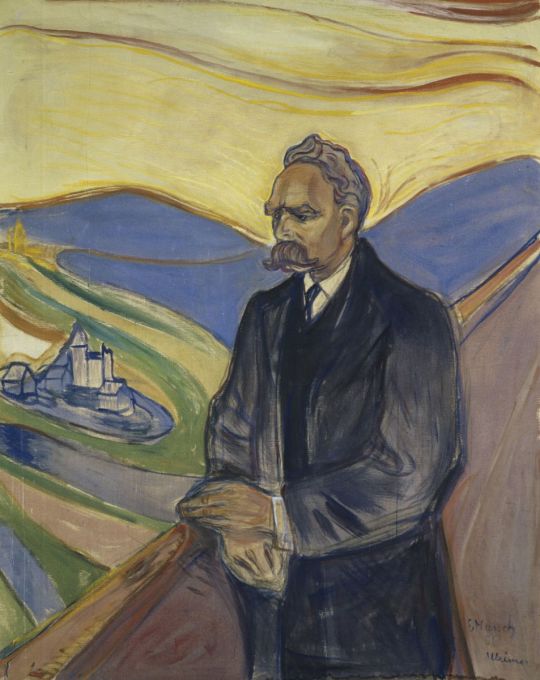
How little belongs to happiness! The sound of a bagpipe. – Without music, life would be a mistake. The German thinks of himself as a god when singing songs.
Wie wenig gehört zum Glücke! Der Ton eines Dudelsacks. – Ohne Musik wäre das Leben ein Irrthum. Der Deutsche denkt sich selbst Gott liedersingend.
—Friedrich Nietzsche, Götzen-Dämmerung Aphorismus Nr 33 (1888)
[Robert Scott Horton]
3 notes
·
View notes
Note
I demand to see the Katte board on your shelf :D
Sure :'D

It ain't much, but it's mine. Just moved them from the board, actually, that one was facing a window and I don't want these to get damaged by the light.
From left to right there is:
An entirely unrelated glass dome from IKEA with an old silver cup I got from my grandma and two Friech related coins, one D-Mark, one Euro (the dome is the most expensive part of this setup)
Burte's terrible, hilarious Katte play (funny music)
"King in Prussia", the one where nobody understands his connection to the Crown Prince 🥺
"Das Richtschwert traf den falschen Hals", aka "I love you so much, my Prince. Jk."
Zeithain. Oh Zeithain.
Actual acclaimed German author Theodor Fontane's "Wanderungen durch die Mark Brandenburg - Havelland", featuring his fictional one shot about baby Katte spending quality time with his dad. I want to get a copy of Oderland eventually (for the Küstrin chapter), preferably also this pretty edition (which only cost me a euro more than the ugly modern one)
Ahnert's "Friedrich und Katte", the one where Katte has A Terrible Beard
A short amateur biography about Katte's father that I got in Wust. Hans Heinrich is quite the personality and I'd love to find out more about him too.
A collection of letters by European monarchs concerning the trial of 1730
A brochure I got in Wust that includes info about the church and the Kattes ("Hans Hermann's first ever letter was to his Engelsschwesterken", I NEED THAT SOURCE, also look at that k, we can see how he pronounced stuff!! 🥺) as well as some letters
Hinrichs' "Kronprinzenprozess", primary sources printed in a particularly exhausting to read Fraktur
Kloosterhuis' "Katte. Ordre und Kriegsartikel", second edition with added list of Ingersleben's 50 teacups
"Schädel-Schicksale" which includes some details about Katte's (?) remains in Wust
"Kriegsgericht in Köpenick", another one of Kloosterhuis', wonderful exhibition catalogue that left me with many new questions (he built a cabinet???)
And a collection of the letters between FWI and Müller the priest that I also got from the nice people in Wust.
Oh. And a bust of Frederick William III. My friend 3d printed it as a surprise for my birthday; Friech wasn't available as a 3d model :'D
I bought all of these except Ordre und Kriegsartikel and the brochures used for a few bucks ^^ Richtschwert cost me a whopping 35 cents with two euros shipping :'D
There are a few more things that I'd like to add. Like "Sorrows of Frederick" (fridged wife Katte, my beloved), but the only copies I can find are in the US and only available if I pay by credit card - which I don't have :(
16 notes
·
View notes
Video
youtube
Nietzsche: Complete Piano Music
Like countless other well-educated German lads, Friedrich Nietzsche took up the piano as a child, and immersed himself in the world of Beethoven and Schumann. But unlike most of them, he pursued music with a single-minded devotion which would later distinguish his philosophical writings. During his teenage years he composed fugues, sonatas and fantasies, as well as more ambitious works such as a Mass, a Miserere, even a Christmas Oratorio: a sublime irony coming from one whose most infamous pronouncement would be that ‘God is dead. We have killed him.’
University studies in Basel put paid both to his Christianity, but when he returned to composition he wrote songs which are now the best-known part of his own music, and have received several recordings. Having composed the Hymn to Friendship in 1874, at the ripe age of 24, he gave up writing music for several years but returned to itlater in life, and he could still play Beethoven sonatas by heart once afflicted by the ravages of syphilis.
Composer : Friedrich Nietsche Artist :Jeroen van Veen piano
00:00:00 Heldenklage, NWV 2 00:02:33 Ungarischer Marsch, NWV 5 00:05:06 Édes titok 00:08:18 So lach doch mal, NWV 9 00:10:08 Da geht ein Bach, NWV 10b 00:12:07 In Mondschein auf der Puszta, NWV 11 00:13:50 Ermanarich, Symphonische Dichtung 00:24:35 Unserer Altvordern eingedenk, NWV 13: I. Mazurka 00:26:09 Unserer Altvordern eingedenk, NWV 13: II. Aus der Czarda 00:28:11 Das zerbrochene Ringlein 00:33:50 Albumblatt 00:37:39 Das Fragment an sich, NWV 35 00:42:31 Hymnus an die Freundschaft, NWV 42: I. Vorspiel 00:47:36 Hymnus an die Freundschaft, NWV 42: II. Hymnus erste Strophe 00:49:17 Hymnus an die Freundschaft, NWV 42: III.Erstes Zwischenspiel 00:55:50 Hymnus an die Freundschaft, NWV 42: IV. Hymnus zweite Strophe 00:57:23 Hymnus an die Freundschaft, NWV 42: V. Zweites Zwischenspiel5’10 01:02:34 Hymnus an die Freundschaft, NWV 42: VI. seht Fest 01:04:01 Hymnus an die Freundschaft, NWV 42: VII. Hymnus dritte Strophe
1 note
·
View note